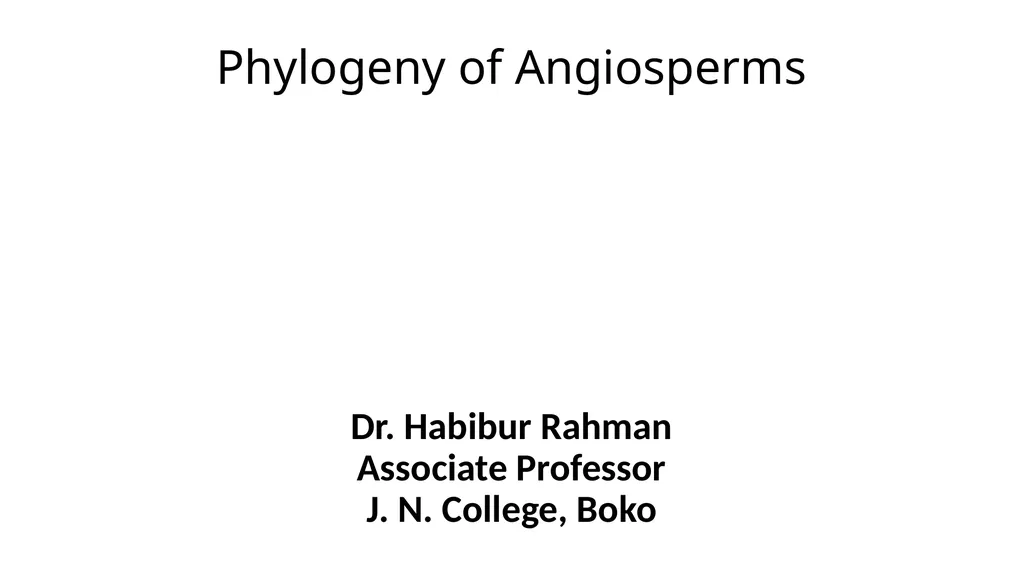
Phylogeny of Angiosperms Dr. Habibur Rahman
Author: min-jolicoeur | Published: 2025-05-23
Description: Phylogeny of Angiosperms Dr. Habibur Rahman Associate Professor J. N. College, Boko What Is Phylogeny? Phylogeny is the study of relationships among different groups of organisms and their evolutionary development. Phylogeny attempts to
Download Presentation
Download the PPT/PDF: Download
Transcript:
Loading transcript…